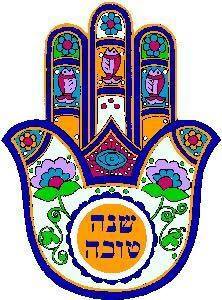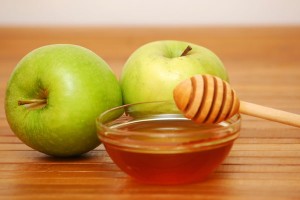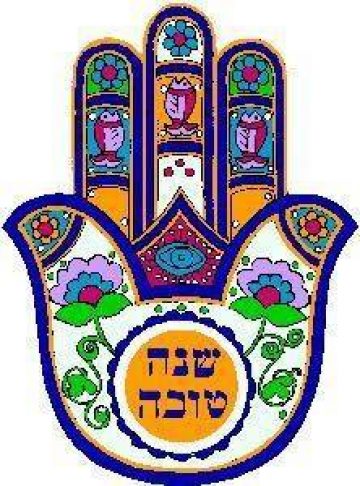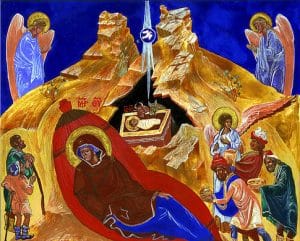Click for French Translation/Traduction en français
 Sometimes in the church, we become so familiar with symbols that we forget what the symbol really is. Bread is one of those symbols that we hear about every week as the sacrament is being blessed and passed. And as I was contemplating this message, my mind swirled with thoughts of bread— literal bread. I thought of those who are gluten-intolerant, and Celiac, and cultures where bread is uncommon… and I wondered… what is the real substance behind bread?
Sometimes in the church, we become so familiar with symbols that we forget what the symbol really is. Bread is one of those symbols that we hear about every week as the sacrament is being blessed and passed. And as I was contemplating this message, my mind swirled with thoughts of bread— literal bread. I thought of those who are gluten-intolerant, and Celiac, and cultures where bread is uncommon… and I wondered… what is the real substance behind bread?
I confess that the message this month did not feel clear to me about the use of the symbol of bread. Clearly Christ is the bread—as recorded by John (John 6:35), “And Jesus said unto them, I am the bread of life: he that cometh to me shall never hunger; and he that believeth on me shall never thirst.”
And yet… there are days like today, where I still feel alone, weepy, and just, well—spiritually unfilled. My spirit is hungry and thirsty. I know Christ is “the bread of life,” yet through my prayers and study today, I still feel…. Empty. I sense and fear that I am not alone in this feeling. That although we might know what is supposed to fill us, sometimes we still feel unfed. We seek for more.
In seeking sustenance for something more, I came across this, from Spencer J Condie’s The Song of Redeeming Love, 2002, 108-109 where he tells of an experience he had visiting Jerusalem and sharing in the “rites and rituals” of Jewish Sabbath:
“I had the good fortune of being seated next to a rabbi. Another rabbi stood at the head of the rectangular tables and led our ritual. When singing one of the Psalms in the beautiful mode of synagogue cantor, he began breaking two loaves of bread into smaller pieces. I leaned over to the rabbi next to me and asked the meaning of the ritual. He replied, “The two loaves represent the two potions of manna the children of Israel gathered on the eve of the Sabbath as they wandered the desert for forty years.”
My random choice of this book no longer seemed random. Being from NY, I am no stranger to Judaism. In this, I had been privileged– no, blessed— that a number of friends in the recent weeks had shared blessings and dedications on facebook for Rosh Hashanah, the Jewish New Year (September 24-26, 2014). I had been moved by phrases from my Jewish friends such as “I wish blessings for the new year with peace and love to all,” and “Build your special relationship with the Almighty with prayer, conviction and faith,” and began salivating thinking of the foods I had shared with Jewish friends in years past—specifically the Rosh Hashanah tradition of apples and honey, which symbolise the hope and blessing of a “sweet new year.” Many of the foods served are those which are mentioned in the Talmud, and from what I understand, all have symbolic meaning.
by phrases from my Jewish friends such as “I wish blessings for the new year with peace and love to all,” and “Build your special relationship with the Almighty with prayer, conviction and faith,” and began salivating thinking of the foods I had shared with Jewish friends in years past—specifically the Rosh Hashanah tradition of apples and honey, which symbolise the hope and blessing of a “sweet new year.” Many of the foods served are those which are mentioned in the Talmud, and from what I understand, all have symbolic meaning.
In thinking of this, I was again brought to the thought of bread, and found Condie’s passage enthralling. Condie continued:
“The broken bread was passed around to each person seated around large tables. The chief rabbi then held up a bottle of grape juice, explaining that juice was being used on this occasion instead of red wine in deference to Latter-day Saint students present. Again he sang a beautiful plaintive song, and I again asked my neighbour the meaning of the ritual. “The red wine represents the lamb’s blood the children of Israel smeared on their doorposts so the destroying angel would pass over their firstborn children.
“Nearing the conclusion of His earthly ministry, the Saviour met with His disciples in an upper room to engage in a ritual they thought would be familiar to them. But instead of breaking bread that represented manna in the wilderness, He said to them, “Take, eat; this is my body. He then took the chalice of wine and said, “Drink ye all of it, for this is my blood of the new testament, which is shed for many for the remission of sins.
“For those who had eyes to see and ears to hear, it was clear that the law of Moses and the rituals they had practiced for years pointed to the atoning sacrifice of Jesus Christ.”
This is just what I had been unknowingly seeking to learn: about the symbol of bread, and how Christ fills me and makes me whole, through the atonement, even on lonely days. From the message:
Said Elder D. Todd Christofferson of the Quorum of the Twelve Apostles, “The Lord’s invitation … speaks of a loving God, aware of even the small, daily needs of His children and eager to assist them, one by one. He is saying that we can ask in faith of that Being ‘that giveth to all men liberally, and upbraideth not; and it shall be given’ (James 1:5).”1 As we understand that Jesus Christ will provide for our needs, we will turn to Him for our spiritual sustenance.
It was then that I realised that in my case of the “blahs,” I was filled with facebook posts from friends celebrating Rosh Hashanah. But I had not seen the blessings in depth, because for whatever reason, I had forgotten that unleavened bread, like non-LDS sources, also bring the good news of the gospel, and the bread of the atonement. And it reminded me to feel joy, because Yom Kippur—the Jewish day of Atonement, begins on October 3rd at sundown… just before the start of the western “Holiday Season”- which includes Canadian Thanksgiving, the Celtic Harvest Festival (Halloween), US Thanksgiving, and Christmas. Thinking that the holiday season starts with The day of Atonement made me feel …. Hope. It filled me. I hope it fills you, too.
So- even though the formal message includes a quote from Elder Holland, I am going to include a quite from his better half, Patricia T. Holland, from The LDS Women’s Treasury, 1997, 477:
Women of covenant can be a powerful force for righteousness in this world. It is our nature to kindle spirituality within every sphere of our influence. We are bearers of light, and I know we can be the instrument for conveying that light from one realm to another and another and another.
Shana Tova!
How can you bring the “bread,” or the feeling of being filled through the Atonement to the women you visit teach?
How can you invite them be filled by the Atonement, especially as we prepare for the crazy and busy Holiday Season?
What are your thoughts on the Visiting Teaching Message this month?
<a id=”French-translation”></a>
October 2014 de visiting teacher
Parfois dans l’Eglise, nous nous habituons tellement aux symboles que nous oublions où est le symbole. Le pain est l’un des symbole dont nous entendons parler chaque semaine lors de la bénédiction et l’administration de la Sainte-Cène. En pensant à ce message, j’ai beaucoup pensé au vrai pain. J’ai pensé à ceux qui sont sensibles au gluten et aux cultures où on ne mange pas souvent le pain et je me suis demandée, quel est le substance du pain ?
J’avoue que le message de ce mois-ci ne m’était pas clair sur le symbole du pain. C’est clair que le Christ est le pain, comme il est dit dans Jean 6 :35 :
Et Jésus répondit:—C’est moi qui suis le pain qui donne la vie. Celui qui vient à moi n’aura plus jamais faim, celui qui croit en moi n’aura plus jamais soif.
Et pourtant il y a des jours comme aujourd’hui où je me sens seule et vide spirituellement. Mon âme a faim et a soif. Je sais que le Christ est le pain qui donne la vie, mais malgré mes prières et mes études, je me sens encore vide. Je crains que je ne suis pas la seule à ressentir que même si nous savons ce qui est censé nous nourrir, parfois nous restons sur notre faim. Nous cherchons quelque chose de plus.
En cherchant cette quelque chose de plus, je suis tombée sur cette citation du livre The Song of Redeeming Love par Spencer J. Condie, où il raconte une expérience qu’il a eue pendant une visite à Jérusalem où il a participé aux rites et aux rituels du Jour de Sabbat juif :
J’ai eu la chance d’être assis à côté d’un rabbin. Un autre rabbin se tenait à la tête des tables et a dirigé notre rituel. En chantant un psaume du beau style du synagogue, il a commencé à casser deux pain en petits morceaux. J’ai tourné vers le rabbin à côté de moi et lui ai demandé la signification de ce qu’il faisait. Il m’a répondu, ‘Les deux pains représentent les deux parts de manne que les enfants d’Israël ont récolté la veille du jour de Sabbat pendant les quarante ans qu’ils erraient dans le désert.’

Etant de New York, je connais bien le Judaïsme, et beaucoup de mes amis ont fait des bénédictions et des dédicaces sur facebook pour Rosh Hashana, le nouvel an juif (du 24 au 26 septembre en 2014). J’ai été touchée par des phrases écrites par mes amis comme : « Je vous souhaite plein de bénédictions pour le nouvel an, avec la paix et de l’amour pour tous, » et « Créez votre relation spéciale avec le Tout-Puissant par la prière, la conviction et la foi. » J’ai pensé aux repas que j’ai partagés avec mes amis juifs dans le passé, surtout des pommes et du miel qui symbolisent l’espérance et la bénédiction d’une « nouvel an doux. La plupart des aliments servis sont mentionnés dans le Talmud et chacun a une signification symbolique.
Je pensais à tout cela, et j’ai pensé encore au pain. Condie continue dans son livre :
Le pain rompu a été passé à chaque personne assise autour des tables. Le rabbin a montré une bouteille de jus de raisin en expliquant que le jus remplacerait le vin rouge en respect des étudiants mormons qui étaient présents. Il a encore chanté un chant beau et plaintif et j’ai demandé à mon voisin la signification du rituel. ‘Le vin rouge représente le sang de l’agneau que les enfants d’Israël ont étalé sur leurs portes pour que l’ange destructeur passe au-dessus de leurs enfants premiers-nés.’
Vers la fin de sa ministère terrestre, le Sauveur a retrouvé ses disciples dans une salle pour s’engager dans un rituel qu’ils pensaient connaître. Mais au lieu de rompre du pain pour représenter le manne dans le désert, il leur a dit, « Prenez, manger, ceci est mon corps. Il prit ensuite une coupe; et, après avoir rendu grâces, il la leur donna, en disant: Buvez-en tous; car ceci est mon sang, le sang de l’alliance, qui est répandu pour plusieurs, pour la rémission des péchés.
Pour ceux qui avaient des yeux pour voir et des oreilles pour entendre, c’était clair que la loi de Moïse et les rituels qu’il avaient pratiqués pendant des années devait rappeler le sacrifice expiatoire de Jésus-Christ.
C’est exactement ce que je cherchais à apprendre : le symbole du pain, et comment le Christ me nourrit et me guérit, par l’intermédiaire de l’Expiation, même pendant les jours où je me sens seule. Dans le message :
D. Todd Christofferson, du Collège des douze apôtres, a dit : « Jésus nous a enseigné, à nous, ses disciples, que nous devons demander à Dieu chaque jour notre pain ‒ l’aide et le soutien ‒ dont nous avons besoin ce jour-là. L’invitation du Seigneur […] évoque un Dieu aimant, conscient du moindre des besoins quotidiens de ses enfants et désireux de les aider, un par un. Il dit que nous pouvons demander avec foi à cet Être ‘qui donne à tous simplement et sans reproche’ et qu’il nous sera donné (Jacques 1:5)1. » Quand nous comprenons que Jésus-Christ pourvoit à nos besoins, nous nous tournons vers lui pour notre nourriture spirituelle.
Je voudrais inclure une citation de Patricia T. Holland, la femme d’Elder Holland, tiré de The LDS Women’s Treasury, 1997, p. 477:
Les femmes de l’alliance peuvent être une force puissante pour la justice dans ce monde. C’est de notre nature de susciter la spiritualité dans chaque domaine sous notre influence. Nous sommes des porteuses de lumière et nous savons que nous pouvons être un instrument pour transmettre cette lumière d’un domaine à un autre, et encore à un autre.
Shana Tova!
Comment pouvez-vous apporter le “pain” ou le sentiment d’être nourri par l’Expiation aux sœurs que vous visitez?
Comment pouvez-vous les invitez à être remplies par l’Expiation, surtout en préparation au période des fêtes?
Quelles sont vos pensées sur le message de ce mois-ci?





